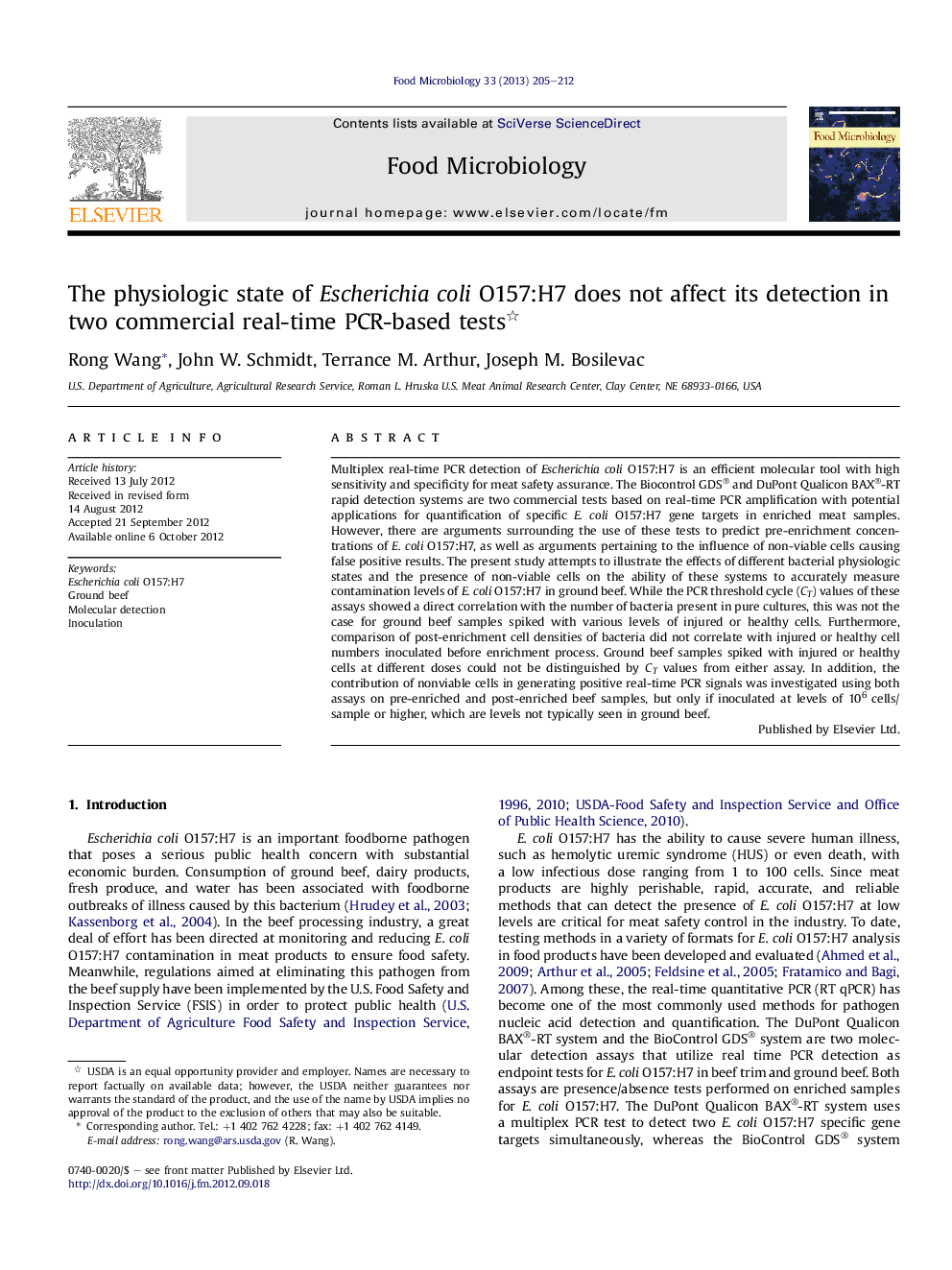| Article ID | Journal | Published Year | Pages | File Type |
|---|---|---|---|---|
| 4363025 | Food Microbiology | 2013 | 8 Pages |
Multiplex real-time PCR detection of Escherichia coli O157:H7 is an efficient molecular tool with high sensitivity and specificity for meat safety assurance. The Biocontrol GDS® and DuPont Qualicon BAX®-RT rapid detection systems are two commercial tests based on real-time PCR amplification with potential applications for quantification of specific E. coli O157:H7 gene targets in enriched meat samples. However, there are arguments surrounding the use of these tests to predict pre-enrichment concentrations of E. coli O157:H7, as well as arguments pertaining to the influence of non-viable cells causing false positive results. The present study attempts to illustrate the effects of different bacterial physiologic states and the presence of non-viable cells on the ability of these systems to accurately measure contamination levels of E. coli O157:H7 in ground beef. While the PCR threshold cycle (CT) values of these assays showed a direct correlation with the number of bacteria present in pure cultures, this was not the case for ground beef samples spiked with various levels of injured or healthy cells. Furthermore, comparison of post-enrichment cell densities of bacteria did not correlate with injured or healthy cell numbers inoculated before enrichment process. Ground beef samples spiked with injured or healthy cells at different doses could not be distinguished by CT values from either assay. In addition, the contribution of nonviable cells in generating positive real-time PCR signals was investigated using both assays on pre-enriched and post-enriched beef samples, but only if inoculated at levels of 106 cells/sample or higher, which are levels not typically seen in ground beef.
► Study provides scientific advice for using PCR-based commercial assays properly. ► Contamination levels of Escherichia coli O157:H7 cannot be measured by assay CT values. ► Nonviable E. coli O157:H7 cells in meat product can lead to positive test results. ► High levels of nonviable cells are necessary to generate positive test results.
